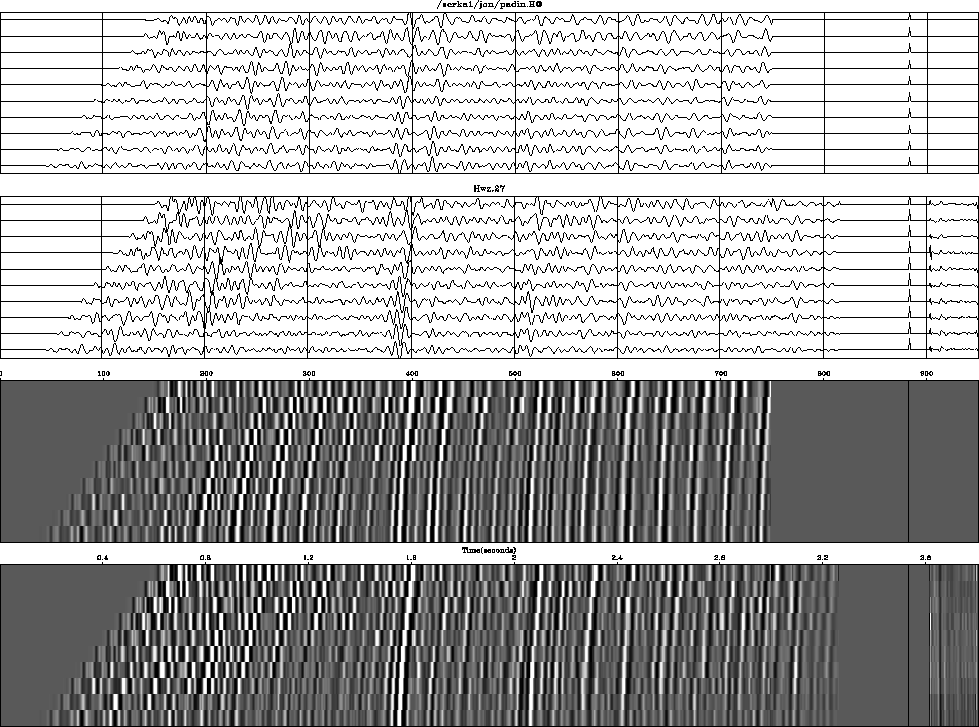




Next: Postcoloring versus prewhitening
Up: THE ERROR FILTER FAMILY
Previous: Proof that PE filter
When a PE filter is constrained so that
a few near-zero-lag coefficients are zero,
the output no longer tends to be white
as the number of coefficients in the filter tends to infinity.
If f1, the filter coefficient
of  , vanishes,
then
, vanishes,
then  lacks the slow variation in
lacks the slow variation in  that this term provides.
It lacks just the kind of spectral variation
that could boost weak near-Nyquist noises
up to the strength of the main passband.
With such variation made absent by the constraint,
the growth of Nyquist-region energy
is no longer a necessary byproduct of PE filtering.
that this term provides.
It lacks just the kind of spectral variation
that could boost weak near-Nyquist noises
up to the strength of the main passband.
With such variation made absent by the constraint,
the growth of Nyquist-region energy
is no longer a necessary byproduct of PE filtering.
Figure 10 illustrates a PE filter with a long gap.
wz27
Figure 10
Data from offshore Canada
(extracted from Yilmaz and Cumro dataset 27)
processed by gapped prediction error.
Inputs above outputs;
filters displayed on the right.
Nicely suppressed multiples appear in boxes.
Badly suppressed multiples are shown above diagonal lines.

(The gap was chosen to be a little less than the water depth.)
This example nicely shows the suppression of some multiple reflections,
but unfortunately I do not see that any primary reflections
have been uncovered.
Because the prediction gap is so long,
the filter causes no visible change to the overall spectrum.
Notice how much more the spectrum was broadened
by the filter with a shorter gap in Figure 9.
The theoretical association of prediction gap width with spectral broadening
is examined next.
Another interesting feature of Figure 10,
which we will investigate later, is a geometrical effect.
This shows up as poor multiple removal on and above the diagonal lines
and happens because of the nonzero separation
of the sound source and receiver.





Next: Postcoloring versus prewhitening
Up: THE ERROR FILTER FAMILY
Previous: Proof that PE filter
Stanford Exploration Project
10/21/1998
